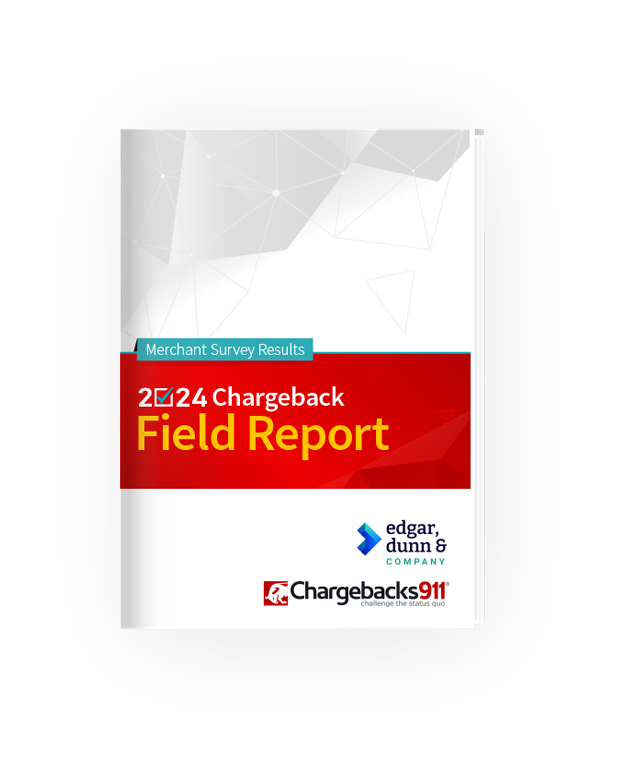Merchant Tips & Best Practices for Processing Authorization Reversals
Seeking authorization is a crucial part of the transaction process. It lets you verify that a customer’s bank account is active and has funds prior to completing a sale.
Of course, not all transactions are final. In many cases, you may need to cancel or reverse a payment. In these situations, getting an authorization reversal may be the best option for everyone involved.
Recommended reading
- How Do Banks Investigate Disputes on Credit Cards?
- What Happens When You Dispute a Transaction?
- The Bank Dispute Process: A Step-by-Step Guide
- What is a Transaction Dispute? Why Do Customers File Them?
- Dispute Management System: How to Pick the Best Provider
- American Express Dispute Center: How to File Disputes & More
What is an Authorization Reversal?
- Authorization Reversal
An authorization reversal is a message initiated by a merchant, intended for a cardholder’s issuing bank. The message notifies the issuer that a transaction (in full or in part) has been canceled, and that an authorization hold should be removed.
[noun]/ô • thər • ə • zā • SHən • rə • vər • səl/
If a bank authorizes the transaction, a temporary authorization hold will usually be placed on their card. This reduces the cardholder’s available credit limit while the transaction is cleared and settled.
But, let’s say a product or billing error arises, or the cardholder wants to cancel their purchase for another reason. If that happens, you may have to perform an authorization reversal. This action effectively cancels the transaction, releases the authorization hold, and frees up the cardholder’s credit line for other uses.
Is an Authorization Reversal the Same as Voiding a Transaction?
For the most part, an authorization reversal the same as voiding a transaction. An authorization reversal requires you to reach out to the issuer first, though.
You may have the option to “void” a transaction during the authorization process. This effectively undoes a transaction, making it as if it never happened.
Voided transactions never get sent to the cardholder’s issuing bank for payment. Regardless, the cardholder will probably still see the charge appear as “pending” on their online statement for a day or two.
In many ways, voiding a transaction and issuing an authorization reversal are the same thing. There are a couple of key differences, though. For instance, an authorization reversal involves an extra step, as you have to communicate to the issuer that you want to release an amount that was previously being held. Regardless, because you’re communicating with the issuer directly via an authorization reversal message, the hold will probably be released much faster.
You will be able to avoid a discount fee in both cases. The funds in question were never batched and submitted for payment, so no funds ever actually changed hands. Regardless, you may be charged another transaction fee instead.
Why Do Authorization Reversals Happen?
Billing errors, incomplete transactions, cancellation requests from customers, or authorized amounts that exceed final transaction amounts can all result in authorization reversals.
It’s possible to submit a transaction with incorrect information, or a charge could be processed more than once for the same purchase. It’s also possible that a service was simply no longer necessary, and so the buyer wanted to terminate it.
If there’s still an authorization hold in place for the amount in question, that can cause problems for the cardholder. The money being held under an authorization hold is tied up and cannot be used for other necessary purchases. The best course of action in these situations is to issue an authorization reversal message.
According to Visa network rules, you should process authorization reversals under the following circumstances:
- The transaction was incomplete: You must reverse the entire authorized amount within 24 hours of becoming aware that that transaction would not be completed. Alternately, it could be at the end of the authorization validity period (whichever comes first).
- Authorized amount exceeds final amount: The cardholder completed a transaction that included an estimated authorization. For example, at a vehicle rental outlet, a hotel, or a cruise line. However, the authorized amount, plus all incidentals, exceeds the final transaction amount 15% or more*. The difference must be reversed within 24 hours of the transaction.
*20% including tips for Taxicabs.
Reduce reversals. Prevent chargebacks. Get started today.
Request a Demo
Why Should I Issue an Authorization Reversal?
Merchants who issue authorization reversals may be able to improve customer trust and satisfaction, keep better records, and prevent chargebacks and other unnecessary fees.
An authorization reversal releases the authorization hold on the cardholder’s account and effectively cancels the transaction. Undoing a transaction is never ideal. In many ways, though, an authorization reversal is the best outcome compared to other payment reversals (i.e. refunds or chargebacks).
Learn more about payment reversalsA reversal can help you avoid trouble down the road… and can even benefit you in certain instances. By issuing an authorization reversal, you can:
What Information Do I Need to Submit With an Authorization Reversal?
To process an authorization reversal, you’ll need to supply the transaction amount and replacement amount, along with the transaction identifier, system trace audit number, and retrieval reference number.
So, there’s clearly a lot of value to be had in processing authorization reversals promptly. Of course, if you don’t provide the necessary information along with the reversal notice, the bank may not be able to remove the authorization hold in a timely manner.
You can avoid this by working with your acquirer to ensure that all information fields are being populated correctly. For example:
- Transaction Identifier (TID): This field must match the Transaction Identifier (TID) generated by the card network and returned as part of the response message to the original authorization request. The TID is a key element that links original authorization requests to subsequent messages, like reversals.
- System Trace Audit Number: This is a number assigned by the merchant that identifies a cardholder transaction and all the message types it comprises. The same trace number is used in an estimated authorization request and response, in an incremental authorization request and response, and in a subsequent reversal request and response.
- Retrieval Reference Number: This field must contain the value from the original authorization request message. The Retrieval Reference Number is used with other key data elements to identify and track all messages related to a given cardholder transaction. It is usually assigned by the acquirer, but it may be assigned by a merchant or by an individual electronic terminal.
- Transaction Amount: Authorization reversals (full or partial) should always contain the original transaction amount in this field. In the case of authorizations which have been incremented, this field should contain the total amount authorized (sum of all original and incremental authorizations).
- Replacement Amount: Contains the corrected amount of an authorization transaction.
Best Practices for Authorization Reversals
Different acquirers, banks, and PSPs may have different requirements and exceptions in place concerning the use of authorization reversals. However, there are several best practices that you should follow regarding authorization reversals, including (but not limited to):
- You should send the authorization reversal transaction using the same submission method (batch or online) as used for the capture transaction.
- For batch transactions, you should send an authorization reversal in a session separate from both the associated authorization and capture transactions.
- When following an authorization with a reversal notice in an online transaction, you should allow a minimum of one minute between the transactions.
- Specify an amount to be reversed (if different from the total amount of the associated authorization).
- Avoid sending an authorization reversal against an expired authorization. This is redundant; when an authorization expires, the hold amount is automatically released.
- If reversing an authorization for a gift card, use a gift card authorization reversal. Do not use a standard payment card authorization reversal.
Remember: speed and compliance with card network and bank rules are key here. You need to move fast, but make sure you’re doing every step properly.
Consider the fact that an authorization reversal is not an instant, automatic process. The issuer needs time to receive and process the request before they can remove an authorization hold. Even then, the funds may not be released immediately. So, the slower you move, the more likely it becomes that your buyer will simply file a dispute to get the money back.
End-to-End Coverage Against ALL Chargeback Sources
Of course, even if you move fast and follow best practices, there’s still a chance that things might go badly. Even if you do everything right, you still have no guarantee that an authorization hold will be released, or that your buyer won’t file a chargeback to correct a perceived error.
In the end, the only real defense against a chargeback tied to an authorization hold is to address them as part of a broader chargeback management strategy.
Chargebacks911® offers the industry’s most comprehensive, end-to-end solution for chargebacks, regardless of dispute source. Our merchant-focused platform helps you eliminate disputes at every stage of the transaction process, from pre-purchase to long after fulfillment.
Ready to take the next step in combating all types of chargebacks and recovering more revenue? Contact us today for a free chargeback analysis to diagnose your business’s risk level.
FAQs
What does “authorize reversal” mean?
Authorizing a reversal is the process of cancelling a previously authorized transaction before it has settled. To authorize a payment reversal, the merchant sends a reversal request to the issuing bank through their acquirer. Upon receiving the request, the issuer releases the authorization hold initially placed on the cardholder’s funds.
Can an authorized transaction be reversed?
Yes, an authorized transaction can be reversed if the customer changes their mind about a purchase, suspects fraud, or encounters merchant errors.
How long does authorization reversal take?
An authorization reversal can be processed in a matter of minutes.
What does reversal mean on a bank transaction?
A reversal on a bank transaction means the cancellation of a previously authorized transaction and the return of funds to the cardholder’s bank account.
Can authorized transactions be cancelled?
Yes, cardholders can contact their issuing banks to cancel an authorized transaction that has yet to settle.
Why did I get a payment reversal?
As a merchant, you may have received a payment reversal due to suspicions of fraud, errors (like double billing, charging the incorrect amount, or product defects), or because of chargebacks filed by cardholders.














